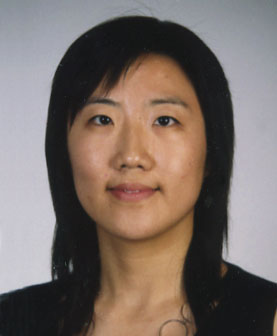Prof. Ximin He, from UCLS, Speaks at MSE/ORaCEL Seminar Today at 11 AM in EB1
Hydrogel for Anti-icing and Oscillation
[ezcol_1half]Prof. Ximin He
School of Engineering
University of California, Los angles
E-mail: ximinhe[at]ucla.edu
Group Website
[/ezcol_1half] [ezcol_1half_end]
Date: Friday, February 21, 2020
Venue: EB1 1011
Time: 11:00 am-12:00 pm.[/ezcol_1half_end]
Abstract
Hydrogels, water-laden crosslinked polymer networks, are a class of soft materials used in broad areas ranging from contact lens to superabsorbent in agriculture. They can be molecular engineered to be functional materials, such as tissue scaffold, wound dressing, or other surface coatings; they can also be designed to be ‘active’ materials, exhibiting life-like adaptive responsiveness to external environment. Stimuli-responsive hydrogels or smart hydrogels are capable of changing volume (swell or contract) reversibly upon various environmental alterations. Recent progresses on two topics will be presented. (1) In observation of the once-a-year exciting snow at Raleigh, I will present a new function of hydrogel for anti-icing, mimicking biological anti-freeze protein (AFP) which has superior freezing-point depressing capability. The ice formation processes on solid surfaces are complex and diverse, mainly from nucleation to propagation and ultimately adhesion. This makes it a daunting challenge to design an icephobic material functional under different icing conditions in complex varying real-life environment. Albeit tremendous efforts on new anti-icing coatings, most of the strategies are structural approaches (creating nano/microstructured superhydrophobic surfaces), rather than chemical physically that can depress the freezing temperature. No anti-icing surfaces could address the three aspects, i.e., nucleation, propagation and adhesion, simultaneously. Inspired by AFP, we designed a hydrogel capable of controlling interfacial water, presenting high performance in inhibiting ice nucleation (< -30 oC), preventing ice propagation (> 500 s/cm2), and reducing ice adhesion (< 20 kPa). (2) With pH- and photo-responsive hydrogels, we realized interesting dynamic behaviors of self-oscillation, modulated chemo-mechanically or drive by light. The chemo-mechanical oscillation is realized by a built-in feedback-loop governed snap-through of a responsive hydrogel strip between bistable or multistable buckling configurations. The photo-oscillation is realized by a different feedback loop that is rooted in the dynamic light-matter interaction, which led to phototaxic swimming soft robots.
 Biosketch: Ximin He is an assistant professor of Materials Science and Engineering at University of California, Los Angeles (UCLA) and Faculty of California Nanosystems Institute (CNSI). Dr. He was postdoctoral research fellow in Wyss Institute of Bioinspired Engineering and School of Engineering and Applied Science at Harvard University. Dr. He received her PhD in Chemistry from University of Cambridge. Dr. He’s research focuses biologically inspired functional smart materials, chemical and biological sensors, actuators with broad applications in materials science, biomedicine, environment, and energy. Dr. He is the recipient of many young scientist awards including the National Science Foundation CAREER award, Air Force Office of Scientific Research Young Investigator Program (AFOSR YIP) award, CIFAR Global Scholar, International Society of Bionic Engineering (ISBE) Outstanding Youth Award, Hellman Fellows Award, and UCLA Faculty Career Development Award. Her research on bioinspired phototropic, phototaxic, homeostatic and ani-icing materials have garnered a number of regional and international awards and was featured in >100 international news outlets.
Biosketch: Ximin He is an assistant professor of Materials Science and Engineering at University of California, Los Angeles (UCLA) and Faculty of California Nanosystems Institute (CNSI). Dr. He was postdoctoral research fellow in Wyss Institute of Bioinspired Engineering and School of Engineering and Applied Science at Harvard University. Dr. He received her PhD in Chemistry from University of Cambridge. Dr. He’s research focuses biologically inspired functional smart materials, chemical and biological sensors, actuators with broad applications in materials science, biomedicine, environment, and energy. Dr. He is the recipient of many young scientist awards including the National Science Foundation CAREER award, Air Force Office of Scientific Research Young Investigator Program (AFOSR YIP) award, CIFAR Global Scholar, International Society of Bionic Engineering (ISBE) Outstanding Youth Award, Hellman Fellows Award, and UCLA Faculty Career Development Award. Her research on bioinspired phototropic, phototaxic, homeostatic and ani-icing materials have garnered a number of regional and international awards and was featured in >100 international news outlets.


